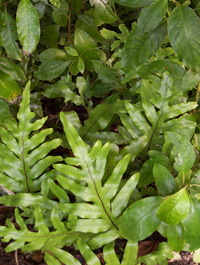
Don’t get your Jerusalems confused with your globes. The Jerusalem artichoke is a brown-coloured, knobbly, white-fleshed tuber root vegetable, much like a yam. It has quite a nutty flavour. Cook them like you would any other root vegetable.
Jerusalem artichokes grow in almost any soil type or shade condition, but do best in a light but rich soil. Pick your patch with these things in mind – 1 – the tops grow to about 2 metres and can easily shade out other plants – 2 – any small amount of the root left in the ground will produce another plan. Best time to harvest is in autumn when the sunflower-like heads die off.
Nutritionally, these tubers rock with plenty of potassium, iron, vitamin C, protein, niacin, thiamine and fibre. They contain about 57 calories per half cup. Margaret Lynch provides really good information on preparing Jerusalem artichokes for eating.
The tubers are also a wonderful source of biomass for ethanol production, good source of fructose and a great forage crop for livestock, especially pigs.
Jerusalem artichoke links and recipes after the jump. Read more


